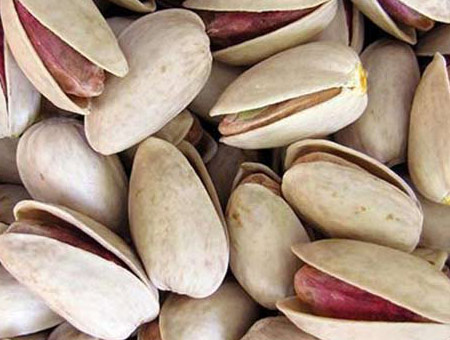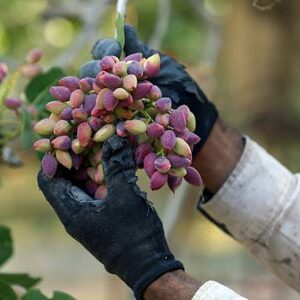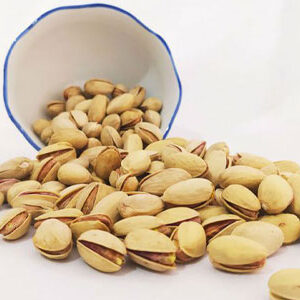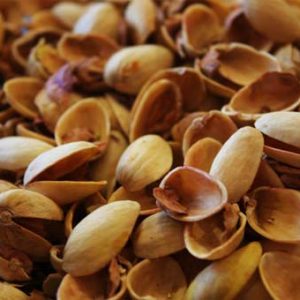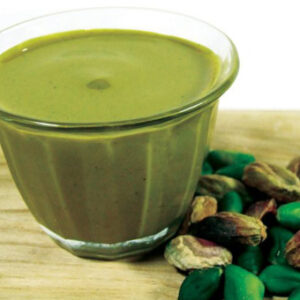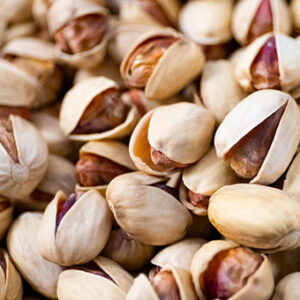The pistachio tree
The origins of the pistachio tree likely trace back to Central or East Asia. Currently, various species of this tree are cultivated in Iran. Pistachio trees have two bases, indicating that male and female blossoms develop on separate trees.
As a result, both male and female flowers are not present on the same tree. The leaves of the pistachio tree are light green and alternate with 2 or 3 pointed leaflets with a terminal leaflet. The blossoms of the pistachio tree are clustered, and the male flowers lack petals.
Pistachios are known by different names in different regions of Iran, based on qualities such as taste, kernel color, size, darkness, lightness, and skin color.
In addition to these features, pistachio production also influences the price of this dried fruit in terms of quality. For example, Damghan pistachios are highly regarded for their exceptional taste and high fat content, Qazvin pistachios are esteemed for their green kernel color, and Rafsanjan pistachios are prized for their taste, red kernel color, and light skin color.
Apart from the cultivars mentioned in the previous section, some of the most renowned types of pistachios in Iran include Jabbari Pistachio, Rokany, Ghanouri, Nahedi, Ali Aghaei Badami pistachio, Badami pistachio Kaj, Seif al-Dini, Heratifi, Paper Peel, Badami pistachio Ravar, Shatabadi, Ebrahimabadi, Mumtaz Tajabadi, Fandoghi Riz, Khanjari Ravari, and others.
It is noteworthy that among the most important cultivars used for export are Kalleh ghouchi, Fandoghi, Akbari, Ahmad Aghaei, and Badami pistachio cultivars.
Iranian pistachios have various varieties, and to date, more than 70 types of pistachios have been identified and cultivated in Iran.
The most famous Iranian pistachios include Akbari pistachio, Koleghoochi pistachio, Ahmad Aghaei pistachio, Fandoghi pistachio, Shahpasand Damghan pistachio, white pistachio, Nogh pistachio, & Qazvini pistachio. There are different classifications for the various types of pistachios in Iran.
Badami pistachios have a long shape, similar to Akbari and Ahmad Aghaei pistachios or the white cultivar Nogh pistachio. These pistachios are classified in the group of Badami pistachios. Badami pistachio is renowned globally for its elongated and attractive appearance.
Luxury pistachios are also considered to have a round appearance, such as Kalleh ghouchi and Fandoghi pistachios. Badami pistachio is a commercial and export cultivar of Iranian pistachios, sold in various forms as kernels or in shells.
In addition to the aforementioned reasons, the rooting and root structure of this cultivar should also be noted. In the Badami pistachio cultivar, it has a straight and deep core with three to four roots.
However, in other cultivars, the roots spread out, and they grow almost uniformly at a shallow depth, up to a certain central point. These roots do not tend to go very deep, causing more issues in branches and leaves. In contrast, the Badami pistachio cultivar has a straight core that sinks deep into the soil.
It should be noted that the tree’s primary roots differ from the shallow roots; the main root provides stability and sustenance for the tree, while the majority of the roots visible to gardeners serve for nutrition and growth.
For these reasons, all pistachio experts recommend using Badami pistachio seeds for planting pistachios. The characteristics of trees of this cultivar include high growth power and an extensive growth habit.
The height of trees of this variety is 3.5 meters, and the width of the crown of the tree is 3.5 meters. This cultivar is considered one of the average flowering cultivars, with flowering lasting from April 16 to April 27.
The growth of the kernel begins around July 10, and the full growth of the kernel is reached by August 20. The kernel is red, with the softshell color tending towards green as it ripens to a bright red.
The position of the bony shell is equal on both the dorsal and abdominal sides. The color of the white bony shell is slightly dull.
Benefits of Badami pistachio
- Resistant to salinity
- Resistant to dehydration
- Resistant to soil fungi
- Resistant to pistachio psyllids (a type of insect)
- Possesses proper rooting
- Regular and consistent annual yield


